Scottish Basket Hilted Sword of “Glasgow Style” Dating to Circa 1730
An imposing and well balanced sword of fine quality workmanship which represents the highest standard of the Scottish sword making craft during the two decades before the last Jacobite Rebellion in 1745. The sword is mounted with a broad double edged blade and retains its scabbard. The main structural bars of the guard are of thick flattened rectangular section. These are decorated on the outside with an incised longitudinal groove along the middle with a narrower groove on each side in what has come to be known as the “Glasgow Style”.

The style of decoration was developed by sword makers in Glasgow towards the end of the 17th century and continued until the third quarter of the 18th century. The style was copied by the most skilled smiths in other sword making centres in Scotland and was also adopted by the British military in the mid-18th century.

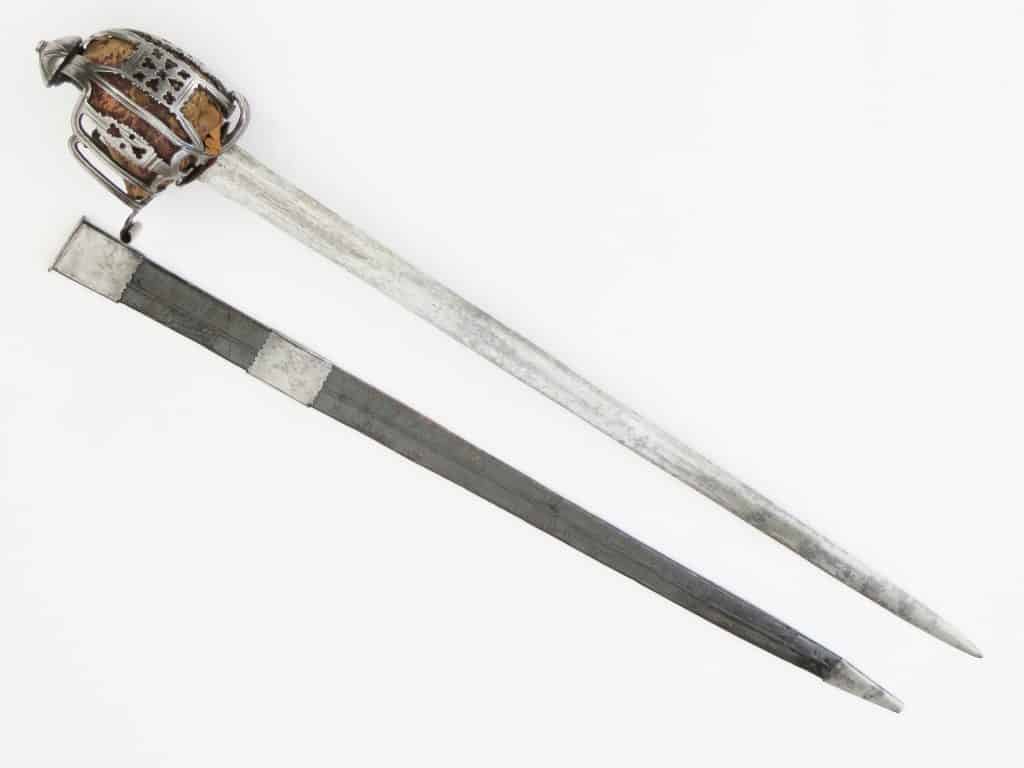
The Glasgow style of hilt decoration is distinctive. Filing and incising the bars in this manner was a time consuming and skilled task demanding many hours of work and reserved only for the best and most expensive hilts. The pommel has a ribbed button on top from which three sets of triple grooves radiate identical in form to those which decorate the main guard bars. Further decoration in the same manner formed as chevrons decorate the spaces between. The guard arm terminals tuck securely into a groove cut around the lower part of the pommel.
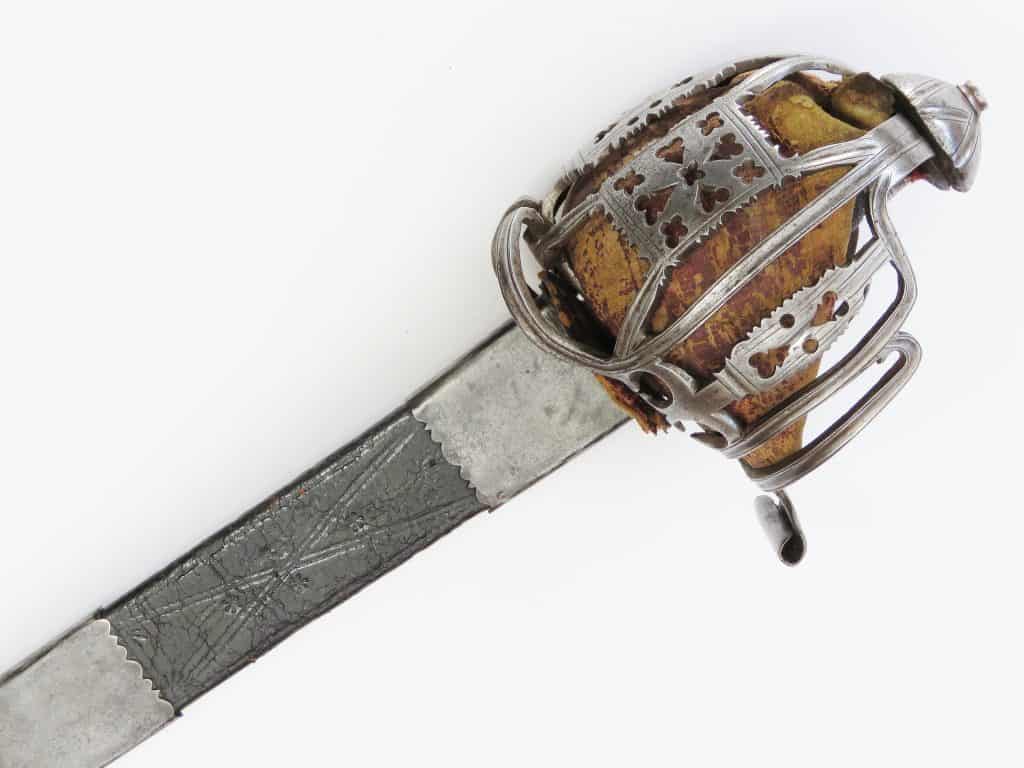
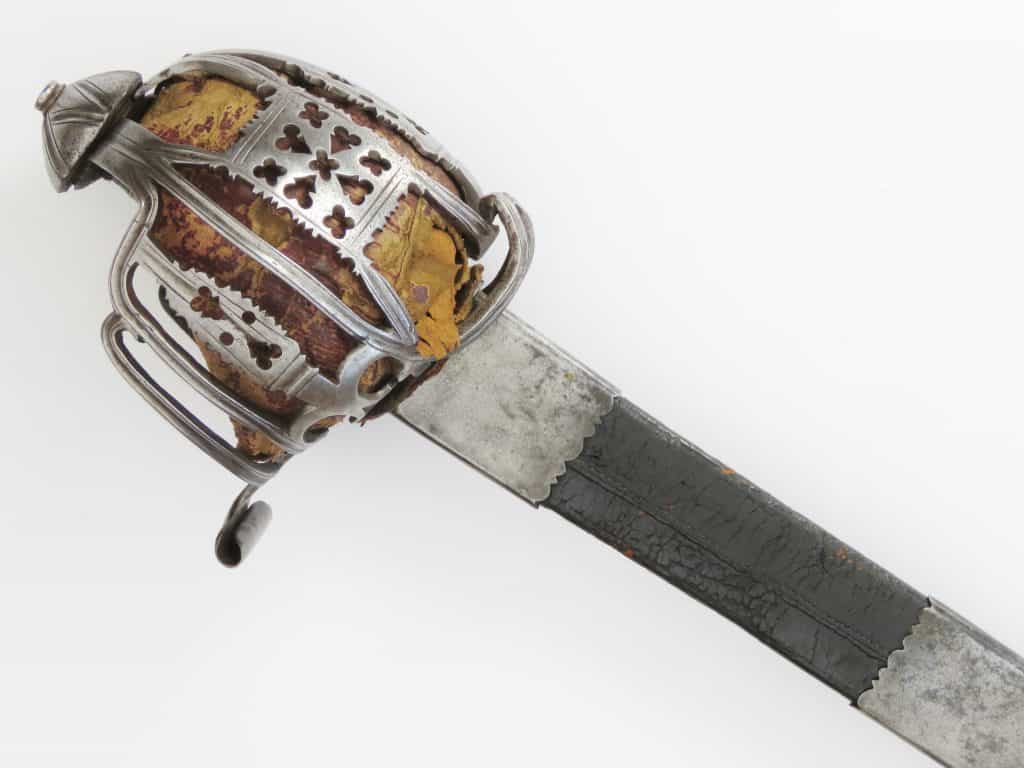
One of the most well known Scottish sword makers of the period was John Allan who was trained in Glasgow by one of the leading sword makers there. In the early 18th century he moved to Stirling to set up his business and continued the production of some of the finest Glasgow style hilts to survive. His son Walter followed him into the trade and was producing high quality swords himself by the 1730’s.
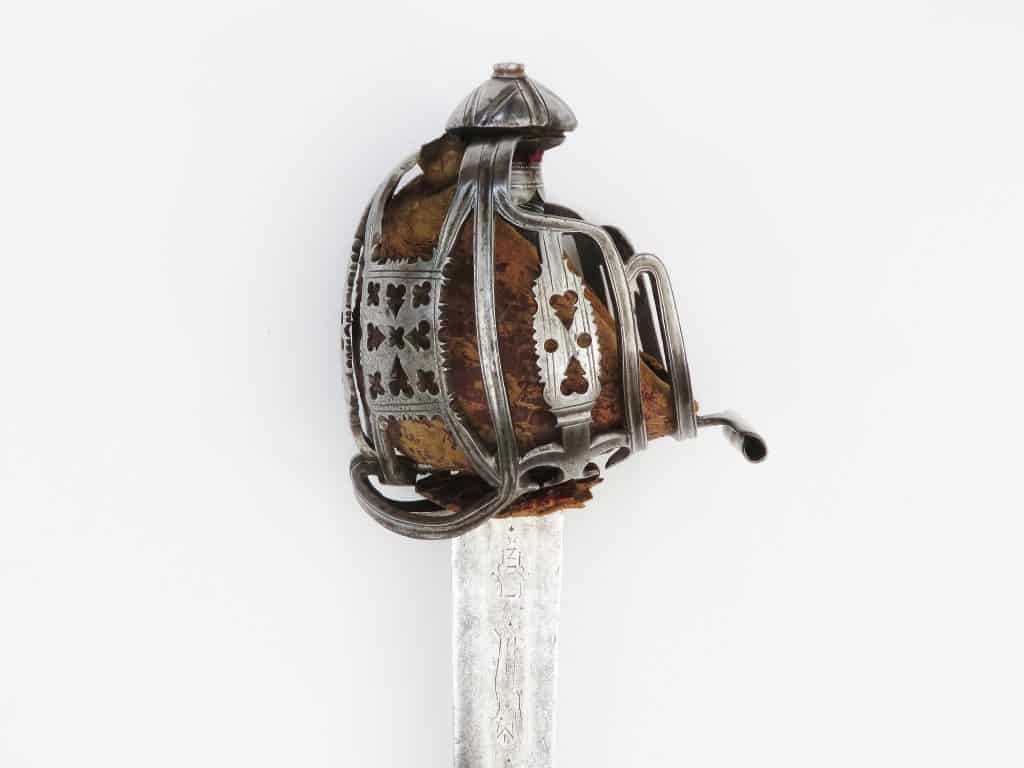
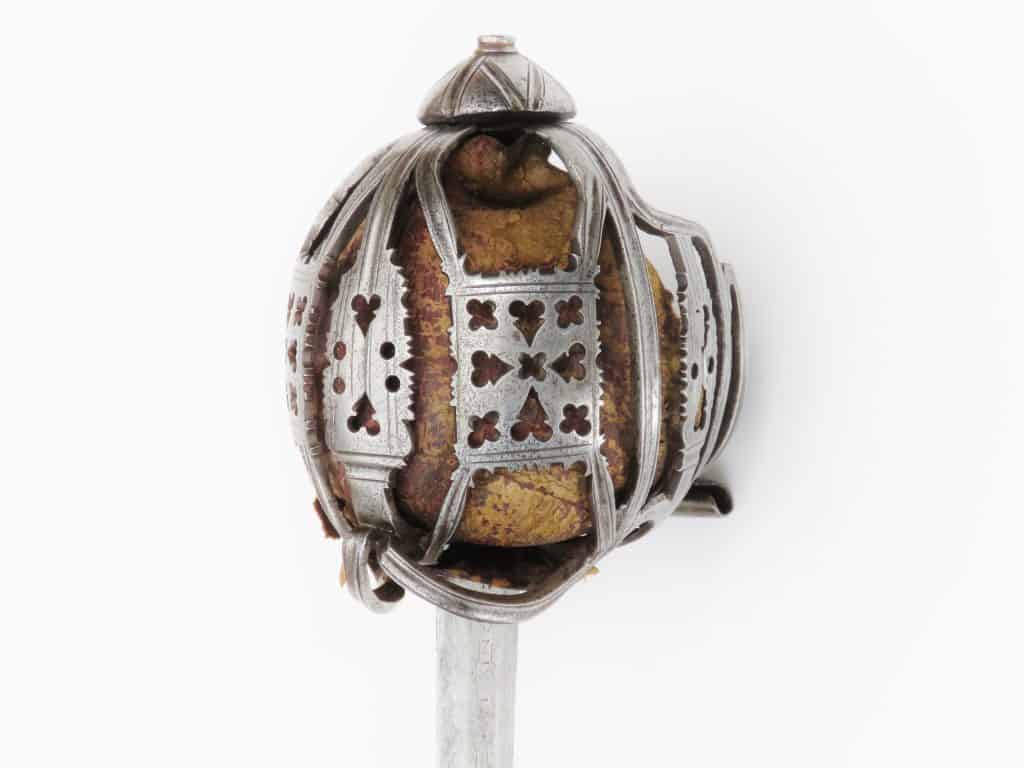
The broad cone shaped pommel of this sword and the eight pierced designs cut into the main guard panels which surround a central saltire is reminiscent of some surviving swords punched with the maker’s initials of these two men. Although this sword does not bear a signature it is very likely that it was made in Stirling in the workshop of one of these two makers. For a very similar sword by John Allan see Cyril Mazansky, “British Basket-Hilted Swords”, Boydell Press, 2005, page 113, Ref: F15d(JA).


The basket hilt of our sword has been intentionally forged to appear slightly asymmetrical when viewed from the front with the basket appearing slightly swollen to the right compared to the left
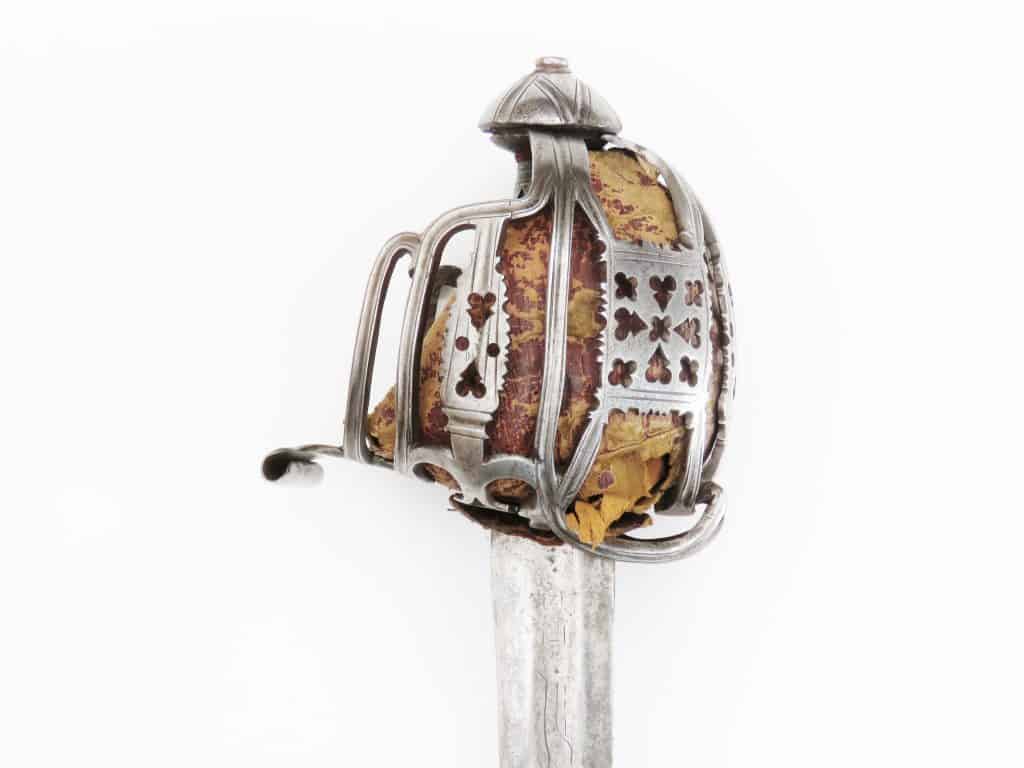

This is another mark of quality indicating that the hilt was made for a right hand user. The swollen side of the hilt accommodates the fingers of the right hand whereas the opposite side needs only to accommodate the thumb which takes up less space inside the hilt.
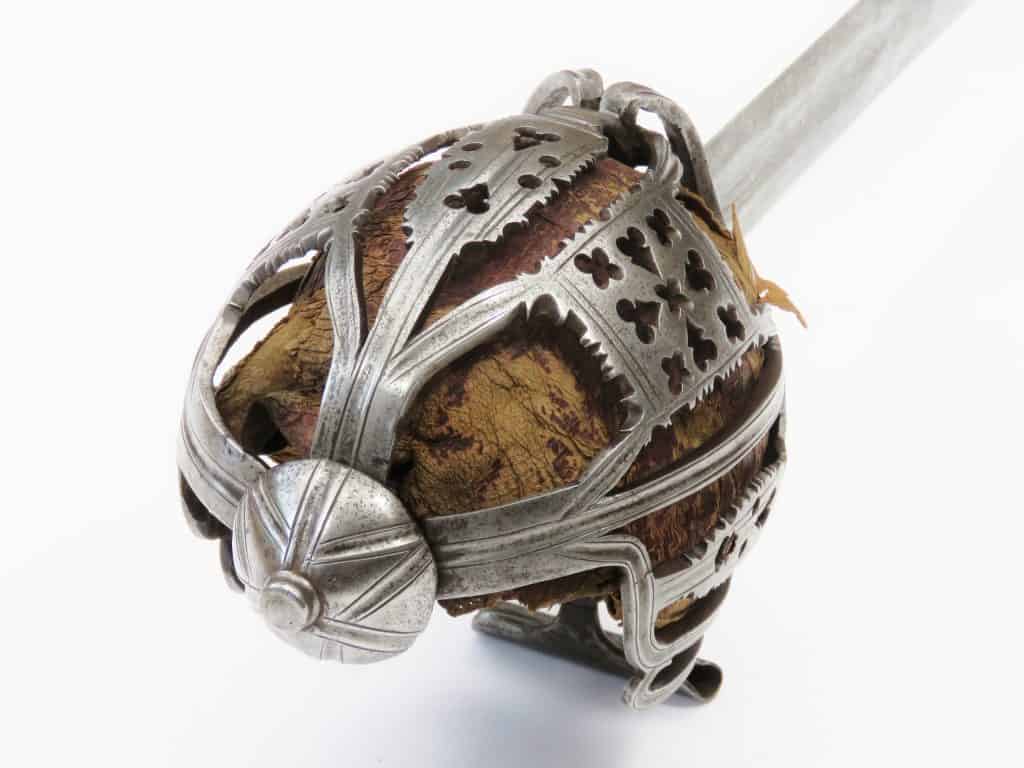

The grip is formed with a spirally grooved wooden core covered with shagreen and bound with silver wire. Ribbed silver ferrules are also mounted onto the grip top and bottom.


The hilt retains its leather liner and washer beneath. The sword retains its original stitched leather scabbard tooled with geometric patterns on the outside and retains its original iron mounts. The tapering double edged blade is 34 inches (86.5 cm) long and of fine quality. It was most likely made in a workshop in Solingen in Germany.

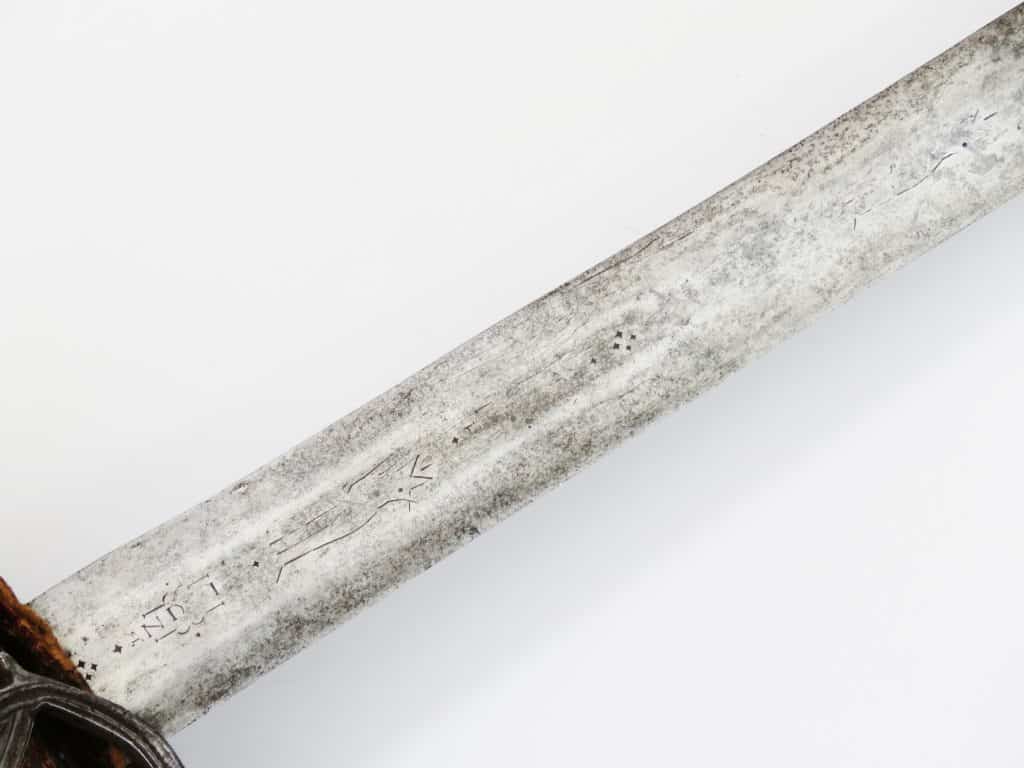
A single shallow fuller extends down the middle of the blade from the hilt on each side for 6 inches (15 cm) after which it is of lenticular section to its tip. Inside the fullers each side a Running Wolf is incised flanked by the word ANDRIA in a frame on one side near to hilt and FARARA on the other with various cross shaped dots. The running wolf is repeated a little distance beyond the end of the fuller on each side. Overall the sword is 40 inches long (just under 102 cm).